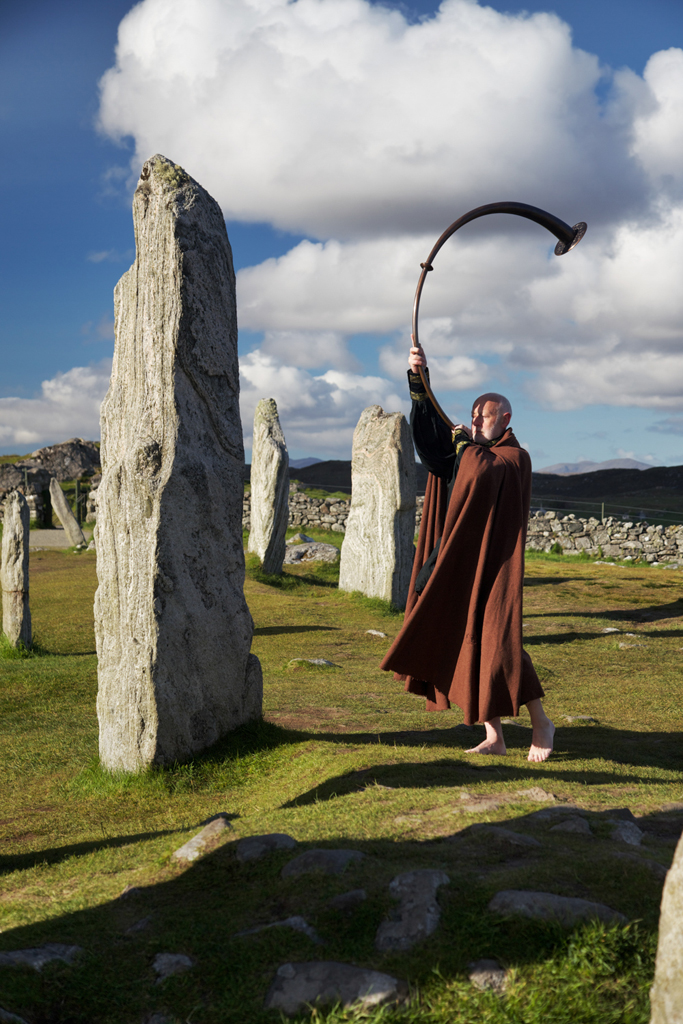Ireland is richer by far in surviving musical instruments from the Bronze and Iron Ages than any other European nation. The Loughnashade horn held by Carnyx & Co is a reconstruction by John Creed of one of four discovered in 1794 during the draining of a peat bog in Armagh. That bog was once the lake of Loughnashade, a short distance from Navan Fort, or Emain Macha, one of the ancient royal sites of Iron Age Ireland.

The horns were part of a hoard which also included a collection of human skulls. Sadly, only one of the horns survived, dating from the first century BC. It is crafted sheets of hammered bronze, made into hermetically sealed tubes by lapping the sheets and securing them with over 1,000 rivets, beneath a conduit which runs the entire length of the instrument. It has four main components: the two long cylindrical tubes with a narrow aperture to take a mouthpiece at one end and a wider bell section on the other end; a biconical ring to hold the two pieces together; and the final and most exquisite piece, a decorated disc attached to the terminal cone of the horn.
The decoration of the bell disc is by far the most eye-catching aspect of the Loughnashade horn. Hammered in high relief and mirrored on each quadrant of the ring, it features long, curving tendrils ending in spiral motifs based on a classical lotus-bud design, and is a testament to the impressive skill of Iron Age craftsmen. It is a magnificent example of so-called La Tène decoration, a style that would dominate the Celtic world for many centuries to come. Acoustic testing as well as live performance have demonstrated that this bell disc has both an amplifying and focusing effect on the tone of the instrument.
The pioneer of the Lochnashade Horn, and of the reconstruction and performance of all Ireland’s Bronze and Iron Age lip reed instruments, is the great scholar-musician, Simon O’Dwyer, who commissioned John Creed to make the first modern reconstruction for performance. Since we have no surviving name from antiquity, Simon denotes this instrument by the Irish name trumpa créda, (which can be translated as both bronze trumpet and earth trumpet) and his publications and many fine recordings can be found at the Ancient Music Ireland website: www.ancientmusicireland.com.
Carnyx & Co is grateful to John Creed for the permanent loan his third Lochnashade reconstruction. As no mouthpiece was discovered in 1794, and as the terminal tube aperture is almost identical in diameter to that of the carnyx, Simon O’Dwyer adopted the form of mouthpiece developed for the Deskford carnyx; the musicians and researchers of Ancient Music Ireland and Carnyx & Co have enjoyed a long and fruitful collaborative relationship. The original instrument can be seen, with the first modern reconstruction, at the National Museum of Ireland in Dublin.


